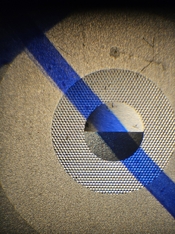@mariozelaschi I'm sure you can get it back to working order; consider that it was adjusted during the initial assembly and that you can do the same.
The focus scale is for indication only, only the physical infinity stop is important. And the rangefinder is adjusted after the lens has been collimated.
Fix the focus bracket to the lens at the position shown in your picture. Place a piece of glass (35mm tall) on the film rails, preferably with two pieces of scotch tape on the rails to offset the glass slightly. Draw a mark on the glass with a felt pen (lens side), open the lens on B, f/2.8. Hold the glass in place with a rubber band or whatever.
Take a digital camera with a long lens focused to infinity (go outside and find a distant building), place it in front of the Olympus lens. Two tripods work. Rack the focus on the Olympus and inspect the felt pen mark using live-view on the camera. When the mark is the sharpest, the Olympus is at infinity. Then adjust the position of the focus bracket until infinity is at the stop.
Then adjust the RF on a distant building to synchronise it.
The focus scale is for indication only, only the physical infinity stop is important. And the rangefinder is adjusted after the lens has been collimated.
Fix the focus bracket to the lens at the position shown in your picture. Place a piece of glass (35mm tall) on the film rails, preferably with two pieces of scotch tape on the rails to offset the glass slightly. Draw a mark on the glass with a felt pen (lens side), open the lens on B, f/2.8. Hold the glass in place with a rubber band or whatever.
Take a digital camera with a long lens focused to infinity (go outside and find a distant building), place it in front of the Olympus lens. Two tripods work. Rack the focus on the Olympus and inspect the felt pen mark using live-view on the camera. When the mark is the sharpest, the Olympus is at infinity. Then adjust the position of the focus bracket until infinity is at the stop.
Then adjust the RF on a distant building to synchronise it.









 ) and confirmed that the factory seals on the screws were intact (so the camera's focus is still the factory one).
) and confirmed that the factory seals on the screws were intact (so the camera's focus is still the factory one).



